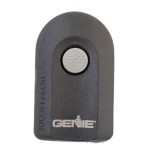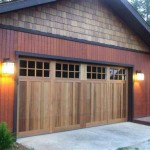Use bullets when listing materials or equipment.
How to Paint a Steel Garage Door
Painting a steel garage door is a worthwhile project that can significantly improve a home's curb appeal and potentially extend the lifespan of the door. A fresh coat of paint can revitalize a weathered or outdated door, giving it a cleaner, more modern look. Furthermore, painting provides an opportunity to address minor surface imperfections, such as rust spots or scratches, preventing further deterioration. Proper preparation and execution are crucial for achieving a durable and aesthetically pleasing finish.
This article provides a comprehensive guide to painting a steel garage door, covering essential preparation steps, material selection, paint application techniques, and troubleshooting common issues. By following these instructions, homeowners can successfully complete this project and enjoy a refreshed and protected garage door.
Preparation is Key: Surface Cleaning and Repair
The longevity and appearance of a paint job are directly correlated with the quality of the surface preparation. A clean, smooth, and properly prepared surface provides the ideal substrate for paint adhesion and prevents premature peeling or blistering. The following steps outline the recommended procedure for preparing a steel garage door for painting.
1. Cleaning the Garage Door: Begin by thoroughly cleaning the entire surface of the garage door. This removes dirt, grime, grease, and any other contaminants that could interfere with paint adhesion. Use a mixture of mild detergent and warm water, applied with a sponge or soft-bristled brush. For stubborn stains or grease spots, a specialized degreaser may be necessary. Rinse the door thoroughly with clean water, ensuring all traces of soap or cleaning agents are removed. Allow the door to dry completely before proceeding to the next step. A pressure washer can expedite the initial cleaning process, but caution should be exercised to avoid damaging the paint surface or forcing water into the door's internal components. Use a wide fan nozzle and maintain a safe distance from the door's surface.
2. Inspecting for and Addressing Rust: Steel garage doors are susceptible to rust, particularly in areas exposed to moisture or salt. Carefully inspect the door for any signs of rust. Small rust spots can be removed with a wire brush or sandpaper. For more extensive rust damage, a power drill with a wire brush attachment may be necessary. After removing the rust, treat the affected areas with a rust converter or primer. Rust converters chemically transform rust into a stable, paintable surface, preventing further corrosion. Apply the rust converter according to the manufacturer's instructions. Multiple coats may be required for optimal protection.
3. Repairing Dents and Scratches: Dents and scratches can detract from the final appearance of the paint job. Fill minor dents and scratches with an automotive body filler. Apply the filler in thin layers, allowing each layer to dry completely before applying the next. Once the filler is dry, sand it smooth using progressively finer grits of sandpaper, starting with a coarser grit (e.g., 80-grit) and finishing with a finer grit (e.g., 220-grit). Feather the edges of the filler into the surrounding surface to create a seamless transition. Wipe away any sanding dust with a tack cloth before proceeding.
4. Sanding the Surface: Even if the garage door appears to be in good condition, sanding the surface is essential for creating a slightly textured surface that promotes paint adhesion. Use a fine-grit sandpaper (e.g., 220-grit) to lightly sand the entire surface of the door. This will remove any remaining loose paint and create a "tooth" for the primer to grip. Wipe away all sanding dust with a tack cloth after sanding.
5. Masking: Protect surrounding areas, such as the trim, windows, and hardware, by masking them off with painter's tape and plastic sheeting or masking paper. This will prevent paint from getting on surfaces where it is not intended. Ensure the tape is firmly pressed against the surface to create a clean, sharp line. Overlap the tape slightly to prevent paint from seeping underneath.
Selecting the Right Materials for a Lasting Finish
Choosing the appropriate materials is vital for achieving a durable and aesthetically pleasing finish. The selected primer and paint should be specifically formulated for use on metal surfaces and compatible with the existing paint or rust treatment. Furthermore, using high-quality brushes, rollers, and other application tools will contribute to a smoother and more professional-looking result.
Primer:
- Rust-Inhibiting Primer: A rust-inhibiting primer is essential for protecting the steel garage door from corrosion. This type of primer contains additives that inhibit the formation of rust, even if the paint layer is scratched or damaged.
- Direct-to-Metal (DTM) Primer: DTM primers are designed to adhere directly to metal surfaces without requiring a separate etching primer. They provide excellent adhesion and corrosion protection.
- Latex vs. Oil-Based Primer: Latex primers are easier to clean up and have lower VOC emissions. Oil-based primers offer superior adhesion and stain-blocking properties, but they require mineral spirits for cleanup. The choice between latex and oil-based primer depends on the specific project requirements and personal preferences.
Paint:
- Exterior Latex Paint: Exterior latex paint is a durable and weather-resistant option for steel garage doors. It is easy to apply, dries quickly, and is available in a wide range of colors.
- Acrylic Latex Paint: Acrylic latex paint offers improved adhesion and flexibility compared to standard latex paint, making it a good choice for garage doors that are subject to temperature fluctuations and movement.
- Direct-to-Metal (DTM) Paint: Similar to DTM primers, DTM paints are designed to be applied directly to metal surfaces without requiring a separate primer. They offer excellent adhesion, durability, and corrosion protection.
- Color Selection: Consider the existing color scheme of the house and the surrounding landscape when choosing the paint color. Lighter colors reflect more sunlight and can help keep the garage cooler in hot weather. Darker colors absorb more sunlight and can help warm the garage in cold weather.
Tools and Equipment:
- Paint Brushes: Use high-quality paint brushes for cutting in around edges and painting detailed areas. Choose brushes with synthetic bristles for latex paint and natural bristles for oil-based paint.
- Paint Rollers: Use a paint roller with a nap appropriate for the surface texture of the garage door. A short nap roller is suitable for smooth surfaces, while a longer nap roller is better for textured surfaces.
- Paint Tray and Liners: Use a paint tray and liners to hold the paint and make it easier to load the roller.
- Painter's Tape: Use painter's tape to mask off areas that you don't want to paint.
- Plastic Sheeting or Masking Paper: Use plastic sheeting or masking paper to protect surrounding surfaces from paint splatters.
- Drop Cloths: Use drop cloths to protect the ground from paint spills.
- Sandpaper: Use sandpaper to smooth out imperfections and prepare the surface for painting.
- Wire Brush: Use a wire brush to remove rust.
- Putty Knife: Use a putty knife to apply and smooth out body filler.
- Safety Glasses: Wear safety glasses to protect your eyes from paint splatters and debris.
- Gloves: Wear gloves to protect your hands from paint.
- Respirator: Wear a respirator to protect yourself from paint fumes, especially when using oil-based products.
Application Techniques for a Professional Result
Proper paint application techniques are essential for achieving a smooth, even, and durable finish. Applying thin, even coats of primer and paint, allowing sufficient drying time between coats, and using the appropriate tools will contribute to a professional-looking result. Patience and attention to detail are critical throughout the application process.
1. Priming the Garage Door: Apply a thin, even coat of primer to the entire surface of the garage door. Use a brush to cut in around the edges and a roller to apply primer to the larger areas. Avoid applying the primer too thickly, as this can lead to runs and drips. Allow the primer to dry completely according to the manufacturer's instructions. The drying time will vary depending on the type of primer and the ambient temperature and humidity. Inspect the primed surface for any imperfections, such as runs, drips, or areas that were not adequately primed. Sand these areas smooth with fine-grit sandpaper and re-prime as needed. A properly primed surface will provide a uniform base for the paint and ensure optimal adhesion.
2. Painting the Garage Door: Apply two thin, even coats of paint to the garage door, allowing each coat to dry completely before applying the next. Use the same techniques as when applying the primer, cutting in around the edges with a brush and applying paint to the larger areas with a roller. Avoid applying the paint too thickly, as this can lead to runs and drips. Overlapping each stroke slightly will help to ensure even coverage. Apply the paint in long, smooth strokes, maintaining a consistent pressure on the roller or brush. This will help to avoid streaks and unevenness.
3. Addressing Runs and Drips: Inspect the painted surface frequently for runs and drips. If runs or drips occur, immediately brush them out with a clean, dry brush. If the paint has already dried, sand the runs or drips smooth with fine-grit sandpaper and touch up the area with paint.
4. Cleaning Up: Once the final coat of paint is dry, carefully remove the painter's tape and plastic sheeting or masking paper. Dispose of the used paint brushes, rollers, and paint trays properly. Clean up any paint spills with a damp cloth and appropriate cleaning solution. Store any leftover paint in an airtight container in a cool, dry place. Properly disposing of painting materials is essential for protecting the environment and preventing hazards.
By following these steps, homeowners can successfully paint their steel garage door and achieve a professional-looking result. The renewed appearance of the garage door will significantly enhance the curb appeal of the home and provide long-lasting protection against the elements.

How To Paint A Metal Garage Door Doodledash Vintage Home

How To Paint A Metal Garage Door And The Best For It Paintrite Pros

How To Paint A Garage Door Doormatic Doors

Painting A Steel Garage Door Worcester Company

How To Paint A Metal Garage Door

How To Paint A Metal Garage Door In 7 Simple Steps

How To Paint A Garage Door Ace Hardware

How To Paint A Metal Garage Door Diy Doctor

A Tutorial For Painting Garage Door Young House Love

How To Paint A Steel Or Aluminum Garage Door Blog
Related Posts








